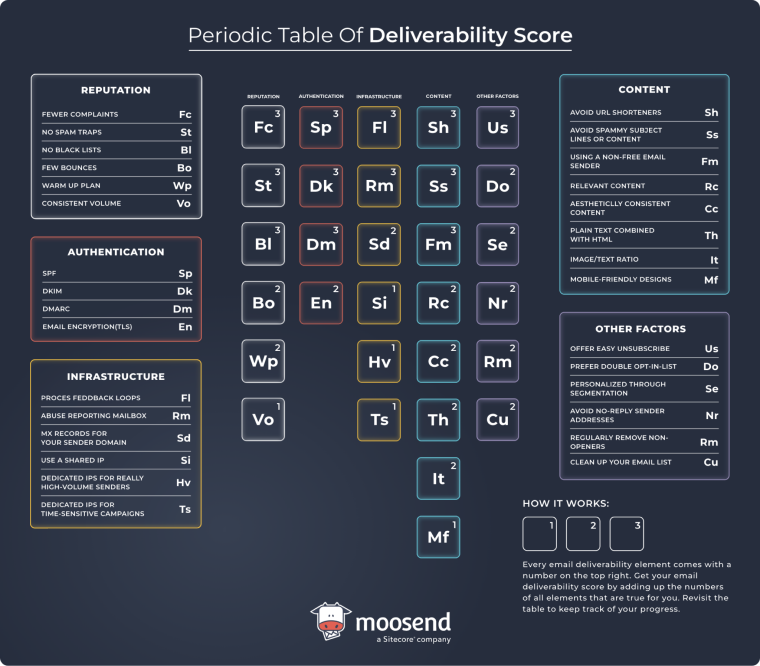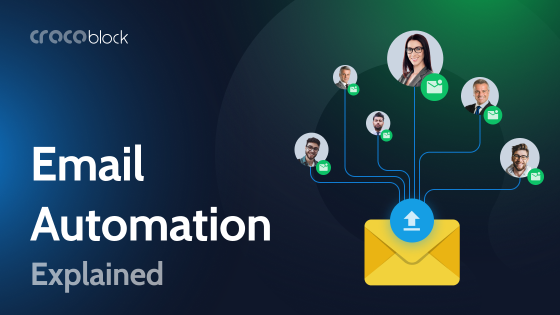Imagine planning a hike on an impressive trail. When the day comes, you take all the necessary equipment with you, from weather-appropriate clothing to a first-aid kit. And an expensive GPS device. During your hiking mission, you have a strong signal at every step but also a hard time using it.
Table of Contents
- Falling for the Free Version
- Not Making a List of Must-Have Requirements
- Not Reviewing Email Deliverability
- Ignoring Educational Resources and Customer Support Options
- FAQ
- Conclusion
It’s been forever since you last navigated with buttons instead of touchscreens. The experience feels slow, and loading maps is a pain. Plus, it’s heavier than the simple smartphones other hikers are using. They’ve downloaded the maps offline, too, so there’s no need for a cell signal either.
Choosing the right email marketing software for your business works similarly. How many marketers have heard promises of “effortless email automation” or “seamless integration?” Promises that made them go for the expensive, fancy tool, only to end up navigating a sea of confusing features and hidden costs?
It doesn’t have to be that way. If you’re on your way to picking your next tool, this guide will walk you through the most common mistakes businesses make in their email software selection – and how to ensure you won’t fall into those traps.
Falling for the Free Version
When searching for email software, some business owners make the mistake of basing their choice solely on budget. They come across a popular tool, go through its pricing, and discover a free version. They decide to subscribe without giving it a second thought.
Costs are and should be a key consideration when picking the ideal email marketing solution, especially for small businesses or any company during the early stages. And a free version is a perfect option since it allows you to test a tool without making a long-term commitment. But before settling for the free version, you should evaluate what it offers and if it responds to both your current and potential needs.
Take the following things into account:
- Do the free version’s features meet your future requirements?
- Is there a cap on the subscriber number or email volume?
- Does each subscriber count as a unique contact? Or will you be charged twice for the same person if they’re on more than one list?
- If the number of recipients or emails increases, does the platform offer affordable and flexible pricing?
For example, Mailchimp, one of the most popular email marketing platforms in the market, comes with a free plan. Your needs may seem basic now, but if you’re scaling, you’ll outgrow the free plan very soon.
To avoid that, it makes more sense to turn your focus on an affordable competitor to Mailchimp. You can find tools coming with a starter plan at a reasonable price while offering more than Mailchimp’s free version.
When looking for a cost-effective tool, check for unlimited emails, multi-step automation, advanced segmentation, and customer support. Also, pick a service with crystal clear pricing that will support your business growth without costing you a fortune. You don’t want to end up with an impressive yet overpriced GPS when you could pay less for the same ease of mind with a reliable smartphone.
Not Making a List of Must-Have Requirements
You may be just starting with email marketing. Or perhaps you’ve already used an ineffective email marketing solution and decided to switch. Whatever the case, you feel that the clock is ticking, and you have to make a choice soon.
Before making a choice, list your requirements one by one, preferably by importance. Get advice from team members on potential email campaigns and how you can integrate them into your overall marketing plan. Then, research different email platforms and the features provided to execute your strategy and adapt it, if necessary.
Some of these features are listed below.
User-friendly interface
An intuitive and simple interface plays an integral role in managing day-to-day tasks. Evaluate the platform’s overall navigation and how easy it is to create emails, edit templates, segment lists, and perform A/B tests. Can you work with the platform’s dashboard and easily understand where to go for each action?
Email automation options
Seek a tool with robust automation that allows you to streamline repetitive tasks while creating personalized experiences. It’s important to have a variety of pre-made and customizable workflows to target subscribers. Look for onboarding series, abandoned cart campaigns, win-back emails, personalized product recommendations, loyalty campaigns, etc. If you own an online store, you need transactional emails, too.
Detailed email analytics
Not monitoring critical email marketing metrics is like walking in the dark. With email analytics, you gain access to essential insights that help you gauge the success of your emails. An ESP with straightforward reporting gives you the opportunity to learn both from successes and failures, understand your audience, and optimize your strategy for future campaigns.
Smooth integration
Email is only part of your marketing equation. As you plan your email campaigns, you’ll need your software to work seamlessly with other apps. Think of eCommerce platforms, social networks, CRM systems, survey tools, and payment apps. Seamless integration with tools you already use simplifies data management and streamlines your workflow. If you plan to build custom forms and need deeper integrations, consider an email marketing solution that works well with JetFormBuilder, a plugin that offers advanced form-building capabilities, like conditional logic and multi-step forms. Integrating a tool like JetFormBuilder with your email marketing software can simplify lead generation and segmentation, enhancing your campaigns’ effectiveness.
Not Reviewing Email Deliverability
You’ll probably spend time and resources gathering emails, segmenting contacts, and creating engaging email content. If you put your trust in an email platform with poor deliverability, though, you risk recipients missing the great work you’ve done. On the other hand, increased deliverability rates mean your emails land in inboxes instead of the spam folder.
Let’s check some critical factors that affect email deliverability:

Good inbox placement means you reach and engage more leads. Plus, the higher your deliverability, the higher your sender reputation and the trust you build with subscribers.
Therefore, before picking email software, review the service’s deliverability rate and the practices they use to ensure your emails land in inboxes safely. Here are some questions to ask during your research:
- Does the software support email authentication protocols like SPF, DKIM, and DMARC?
- Will you have access to robust reporting, including key metrics that impact deliverability, like bounces, spam complaints, and unsubscribes?
- Have they set up processes to warm up new IP addresses?
- Is there an option to preview emails on mobile devices so they are properly displayed and readers don’t move them to spam?
- Does the platform offer resources and readily available customer support when I need it in case a problem arises?
The tool’s capabilities and deliverability are one thing. But another is to make sure you stay informed regarding new email marketing regulations worldwide. That way, you can adapt your strategy accordingly and remain compliant with changing laws.
Ignoring Educational Resources and Customer Support Options
Intuitive builders, easy-to-implement automation, and built-in templates are great – and very much needed. Besides them, there’s another factor that directly affects how much time and effort you’ll spend finding your way through an ESP: educational resources and customer support.
From the simplest to the most complex email solutions, you should expect all tools to have a learning curve. And no matter how experienced a marketer you are, there’s always a need for guidance when dealing with new software. After all, that’s how you’ll make the most of its capabilities. So, reliable customer service and helpful resources should be a top priority.
Experts who’re available to troubleshoot issues as soon as they come up guarantee a smoother user experience—for you and your subscribers. So, it’s important to invest in email marketing software that offers multiple customer support options, such as:
- live chat;
- email;
- extended knowledge base;
- informed blog posts;
- product demos in the form of videos or live webinars;
- an account manager if you have a large sending volume.
Also, don’t forget to check that you can access the customer service options that suit your needs, regardless of the plan. Especially if you’re starting with email, having a knowledgeable and responsive customer support team at your disposal is key. However, to determine if the service’s customer support is reliable, make sure you carefully read through user reviews and testimonials, too.
FAQ
Small businesses can benefit from email marketing software to elevate their email marketing. With features such as email automation, segmentation, and customized templates, they can engage customers while reducing manual tasks.
You should ensure that the software can handle your current email list size and growth potential without overcharging you. Most platforms offer tiered pricing or features that can scale as your database increases.
Yes, many email services offer tools designed to improve deliverability, such as spam testing and sender reputation monitoring. Also, look for software that supports email authentication protocols (SPF, DKIM, and DMARC) and provides detailed reporting displaying bounce rates, unsubscribes, and spam complaints.
Conclusion
To be confident you’ll choose the best email marketing software for your needs, weigh your options carefully. First, outline the features you absolutely need. Then, prioritize your options based on these email marketing essentials. A shortlist of three tools that align with your budget will be just enough to find the best choice for you.
Sign up for these tools’ free trials or free versions and dedicate a few days to testing each tool to ensure it meets your requirements and is easy to use. Don’t forget to read user reviews, too, since people already using the software know all its drawbacks and limitations.
By investing some time and effort in this process and avoiding the mistakes listed here, you increase the chances of making the right choice. Also, be ready to adapt and refine as your business grows and your audience needs change.

